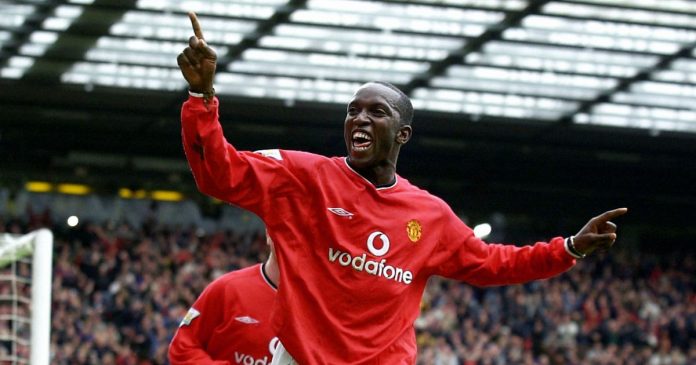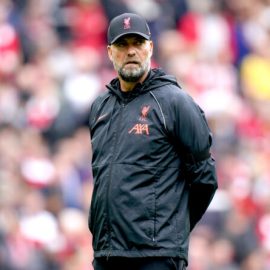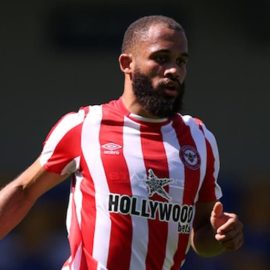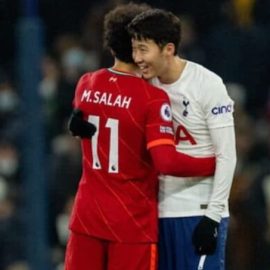This article was originally published on American Soccer News and is reprinted here by their permission. Please visit their website for the latest American soccer news.
As Major League Soccer (MLS) expands from 14 to 18 franchises by 2011 and more beyond, the league is betting on youth academies to supply the growing need for talent. While other franchises already have youth academies up and running, the New England Revolution launched its first U-16 and U-18 teams just this spring.
Mike Burns, the Revolution’s Vice-President of Player Personnel, predicts that “over the next 10 to 15 years, I think you’re going to see the landscape of youth soccer in this country change as dramatically as it has basically, since club teams were introduced in the New England area.”
MLS currently requires clubs to provide one U-16 and one U-18 team, but some have teams that span from U-20 down to U-12. “DC, Chicago, New York come to mind as three MLS teams that have started youth teams years ago. So to be real honest, they’re a little ahead of the curve, but we feel like we’re going to catch up fairly quickly, or at least that’s the intent,” says Burns.
The Revs‘ two youth teams set the foundation for a more serious route of player development more closely resembling that of the U.K. and Europe, where it is an established business. The market here is ripe; John Burrill, Director of Mass Youth Soccer Association, estimates 2007 overall registration at 181,000 and club registration at 7,250. But the success of youth academies abroad is tied to international culture, education, and geography. The new U.S. academies, which plan to offer a professional route, must accommodate U.S. culture, develop new relationships with the existing club structure, and moreover, instill credibility in the investment and return of player development.
Robbie Mustoe is an English midfielder who played in Premier League Middlesbrough for 12 years, briefly coached in its academy, and now works as an ESPN commentator (including the European Championship) and with the Boston College soccer program. “In England and Europe it’s kind of married together,” he says of the youth academy culture. “There’s a route, an avenue forward for these players to go through – right through the ages – to join as a full time academy player. Every day they’re working, they finish high school, and then they may have an option to become a professional player. That’s how it works in England, if it can ever work here, I don’t know.”
In England, the desire to play professional football is instilled in most young boys and the educational system accommodates their development. Students graduate high school at 16 and not nearly as many attend four-year college as in the U.S. There are multiple major clubs with complete and highly competitive youth programs in close proximity, and teenagers use England’s extensive network of public transportation to get themselves to their fully-funded club practice. In contrast, in Massachusetts, players in rigorous college preparatory programs and their parents struggle through hours of gridlocked suburban traffic, consuming scarce time and skyrocketing gasoline prices to attend pay-to-play club practices. Soccer may be the sport, but college is the endgame.
English academy structure sets a standard for training and scouting
Lee Robinson, Head of Sports Science/Education at Premier League West Bromwich Albion FC and former Academy Director of Cardiff City FC, explained the two primary objectives of English academies:
“1) [Create] players to play in senior team (little investment, do not have to buy them for millions!), and 2) Create players to sell to bigger clubs.” At Cardiff, Robinson assisted in the development and sale of Chris Gunter, 17, to Tottenham for $3 million and Aaron Ramsey, also 17, to Arsenal for $5 million.
But Robinson believes MLS “have got it wrong as players 16-18 will already be with clubs and will create resentment if they leave club to go with an MLS academy. You need to get clubs around you too, but into MLS programs, not create problems.” In his experience, if a player “has been tapped up by a bigger club and you have offered him a contract, then you will go to a tribunal if the two clubs cannot agree on a fee . . . this can be a very difficult situation indeed.”
This matter of bigger, richer clubs cherry-picking the best players from smaller clubs has always been a problem overseas and one likely to be seen in the U.S. as well, as the Academy league grows. There is a UEFA ruling requiring compensation for players under 16 years of age, and LA Galaxy coach and former U.S. mens national team coach Bruce Arena feels a similar compensation rate will improve academies in the United States. “Well yeah,” he agreed, “one thing it will certainly do – it will help clubs to get better. For sure, yes.”
Alfonso Mondelo, MLS Director of Player Programs, sees the U.S. compensation situation differently, as the current club structure is pay-to-play. “Once a player is being charged for development, that’s compensation, but if a player is paying to play, the club is not entitled to any compensation,” he opines. “So if it’s a club that does not charge a player, there could be some sort of compensation, but if a player is paying to play, the club is not entitled to any compensation according to the FIFA bylaws . . . If there is a player on scholarship that is not paying to play for that club, then there’s some kind of developmental fees that the club will be entitled to.”
Extended developmental process recognized as critical
English clubs operate on different models, but within a structure and on guidelines that the Premier League has laid down for them. Robinson pushes young players to experience higher levels as a developmental process, in contrast to other “results driven” coaches that allow only proven products to compete with the first teams. Unfortunately, he sees the majority of U.S. coaches of all ages having this “winning mentality,” and fundamentally misunderstanding the development process and selecting all the best players just to have good records. This June, the English Football Association (FA) encouraged this development philosophy by banning competitive U-8 leagues due to “the urgent need to improve skills and technique among young English players.”
The franchise academies compete in the U.S. Soccer Development Academy League along with select pay-to-play club teams. The Academy league currently has approximately 75 teams across the country with nine in Connecticut, New York, New Hampshire, and Massachusetts playing in the Revolution’s group. The players are permitted and encouraged to play for their high schools, but are prohibited from playing in state cups and Olympic Development Programs. According to Alfonso, players are only signed for one year, as opposed to two in England, and at the end of the season every player becomes a free agent. The Academy league doesn’t use the promotion and relegation mechanism that currently marshals the Massachusetts Premier League (MaPLE), from which also has sprung the developmental Massachusetts Soccer Conference (MASC), a youth soccer club without relegation.
Mondelo advocates the development approach, noting the franchise youth academies, “are not in the business of having to win a Championship.” Alfonso believes the fully funded aspect of a franchise academy will help support the best players, the clubs “taking them not just because they can afford to pay for the training, but based on their ability.” MLS allows each academy to determine its own level of overall investment, but requires them to fully cover the costs of the selected players.
Irish-born Ed Kelly is a former U.S. national team player, head of the New England Eagles FC, and head Boston College soccer coach for 19 years, during which time he coached Charlie Davis, formerly with the Boston Bolts and recently signed with Hammarby. Kelly sees the Academy league, where club coaches won’t have to worry about relegation, as a remedy to the “win at all cost” mentality. He said, “You’re talking about development. Some of the [MaPLE] games are so bad because people are so paranoid about getting promoted or getting relegated, and they forget about playing soccer. They forget what they’re in business for, as far as developing players.”
But it is a business, and Kelly witnessed the club compensation conflict emerge around Davis when he was transferred to Hammarby. “Charlie Davis left Boston College to go to Hammarby, and Hammarby sent to papers to me and to [the club] to sign releases, but the Bolts would not sign the release and they demanded that they get compensation, and Charlie had to give them $10,000 of his [own] money so he would sign the release. Tri-Valley and Delco signed off, but the Bolts did not sign off . . . their view on it was that he was a scholarship player, that they funded him when he was playing for them for a year or two.”
Strong academies require substantial funding
Fully developed, youth academies require massive investment in terms of personnel, facilities, transportation, and materials, which are shared with the first team and reserves. West Brom’s Robinson states that annually “clubs can invest anything between GB500,000 up to 10 million [annually] depending on club.” Overseas, higher costs are often driven by the purchase of international youth talent, currently a hotly debated issue as it is seen limiting roster opportunities for native players, and thus the development of national team players. Robinson’s aim is to create local talent and support them with two or three notables from outside the area.
England native Peter Bradley is the director the PDL Crusaders and Mass Premier Soccer (MPS), which is building three facilities with multiple indoor and outdoor fields in the suburbs north, west, and south of Boston. Bradley is heavily invested in the development process of boys and girls from the very early years and also scouting, much in the way of the larger English clubs.
Moreover, Bradley claims MPS is the top U.S. provider of MLS and overseas professionals, having sent over 30 players in all, including Joseph Ngwenya and goalkeeper Troy Perkins. He spoke about the needs and objectives of academy directors. “They want to see players like Wayne Rooney come through. Then eventually if he’s sold for $10, 15, 20 million, then job done – we’ve brought this boy up from eight, he’s now being sold for $20 million – that now substantiates our academy program for the next X number of years . . . Where’s the next Michael Owen? Where’s the next whoever it may be? We have to find him, because otherwise you can’t have your nice turf fields and your nice staff and your going to lose your athletic trainer and you’re going to lose your doctor . . . The bottom line means that the club must make one to five player sales [annually] to support the club.”
When asked whether MLS academies will be in the business of developing players to sell them, Mondelo sees that as a possibility. “There are selling clubs and this is how they survive, and they might not even be first division clubs,” he said. “If they’re in an area where they have access to a lot of players, they take those players and develop them, and their goal is just to be able to move them on to sell them to higher clubs. That could be done if kids could be signed at a young age and they could keep the contact for a number of years. That model I think works in the United States. So, I think yes.”
MLS clubs are searching for new ways to fund salaries required to attract and keep quality players, who are notoriously underpaid and can make far more overseas. But overseas clubs earn substantial revenue from merchandise sales, a response to a long-term fan base not yet existing in the United States, and MLS ticket sales are only now reaching into the black. The New England Revolution, however, have resisted the lure of an expensive designated player and instead brought in young players from as far as Gambia and Zimbabwe, as close and Newton and Wellesley, and under the leadership of English coaches Steve Nicol and Paul Mariner, topped the entire league for two months earlier this season. Despite their success, salaries run from $12,900 for a developmental contract, and from $33,000 on the first team with six players making over $100,000 and only two more beyond, Shalrie Joseph and Taylor Twellman, topping $300,000.
Revolution academy structure follows MLS guidelines
Although MLS has general guidelines, each academy has a certain amount of autonomy in how they configure their youth academy. Says Mondelo, “We recognize that each club is different and each one has its own intricacies, so we leave it pretty much up to them what’s going to work in their market, and how they can get this up and running.” There is no required investment and MLS makes no contribution except for sponsoring the SUM U-17 Cup, picking up travel expenses and team fees.
Per MLS Academy guidelines, the Revolution are allowed to “protect” three players per year, which allows the players to bypass the super draft. Protected players can retain amateur status, attend college full time, and play with the club in the summer. When they graduate, they can play for any international team they are eligible for, but if they sign for MLS, they will play for the Revolution, which would own their rights, only in MLS. That means should the player be transferred, the Revolution would keep a large part of the transfer fee, which Mondelo currently estimates at 60-70%. Another MLS requirement is that the player must be involved with the club for two years before he can be protected. That means the Revolution are nearly two years away from protecting their first players.
Comparable to overseas contractual regulations, there is an MLS restriction that only allows clubs to protect players living within a 75 mile radius of the training facility, considered Gillette Stadium until the Revolution build their soccer specific stadium and training facilities elsewhere. However, “we can have anyone we’d like play for our youth teams,” says Burns. “As far a protecting the player, that’s accurate. Not in terms of who plays for us, though.” Such a player, if found valuable, could relocate, as is often done abroad. Spurs, Arsenal, Chelsea, West Ham, and Fulham all operate in London so the competition for young talent is fierce; young prospects can be encouraged to relocate.
“Middlesbrough has a high percentage of players from their youth academy,” notes Mustoe. “When I say high percentage, I’m only talking about 20% of the roster. So on the roster of a 25 first team squad, they might have five that came through the academy. But other clubs are not as good as that and they might have only one or two players that came through the academy.”
On June 24, the Revolution announced the rosters for the two teams of their program, headed by Mario Prata, with players from Massachusetts, Connecticut, and New Hampshire. Although the Revolution’s primary objective is to find a couple players to move onto the first team, Burns sees other benefits for players. “It provides a platform to be scouted not only by MLS coaches, but also by playing in the U.S. Soccer Development Academy . . . it’s going to provide an opportunity for these kids to be scouted by college coaches as well as professional coaches.” In this way, the Revolution is softening the perceived risk of a professional soccer career to concerned parents, assuring them their boys will be encouraged to pursue a secure future via college.
The debate over college soccer has high stakes
Most U.S. MLS players have college degrees, but overseas many players in their teens, no doubt encouraged by the lure of high salaries, step right into professional contracts. But MLS salaries are not so magnetic and native players rarely consider pro soccer a “career choice.” Acknowledging the degree as the endgame, most coaches and players concede the college soccer route inadequately prepares top players for a professional career. In fact, when asked how the U.S. should create players for the World Cup, Doug Williamson, Assistant Director of Coaching Education and Development for the National Soccer Coaches Association of America (NSCAA) responded, “I think you have to do it outside the college environment . . . If a young person today wants to become a professional soccer player and has that goal, their best option is to get involved in the academy development programs and to look at options other than the college environment . . . The odds of becoming a professional player going through the traditional college route in this country are really poor.”
So, Fulham’s $4 million transfer fee for the Revolution’s Clint Dempsey may not have turned heads overseas, but the cash-strapped MLS looked back at the sketchy kid playing in the dirt in Nacogdoches, Texas, considered the thousands of boys careening around patchy fields across this country, and found a way to proceed through a professional approach to player development.
Also See: Youth Football in the US, Youth Training – USA v Germany and How can we help American youth training for our previous coverage of American youth football.
Add Sportslens to your Google News Feed!






